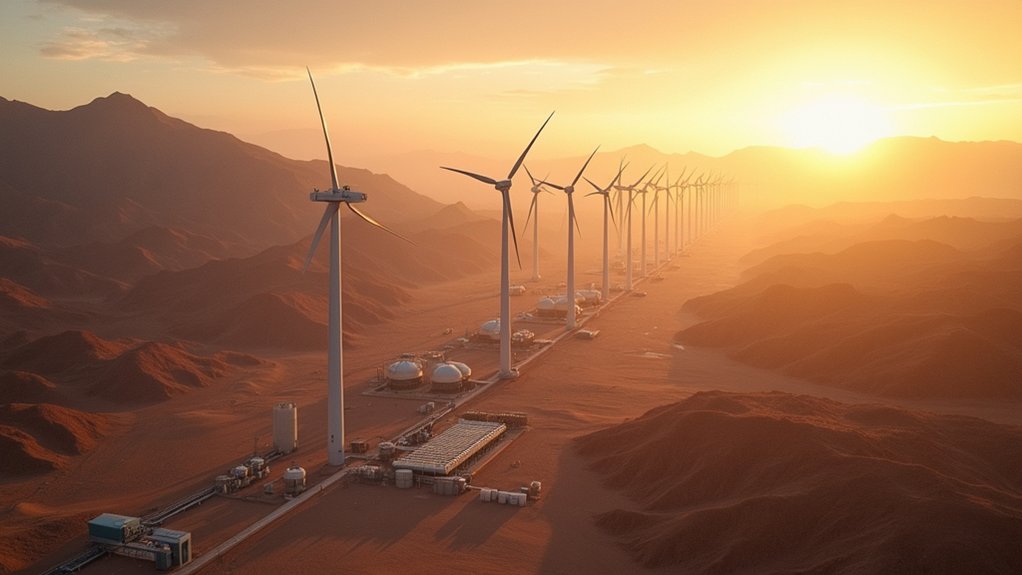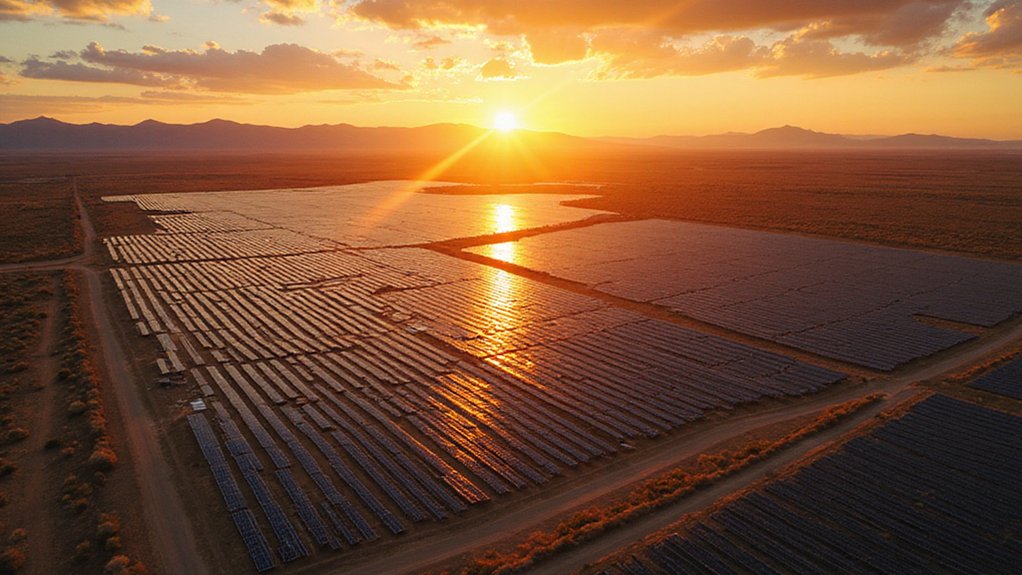China’s Xinjiang region is making waves with a $2 billion investment in wind energy. The area now generates 75.39 billion kilowatt-hours of clean power, supporting national climate goals. It’s not just about electricity – these windy plains are becoming home to green hydrogen projects that could transform China’s energy sector. The combination of strong winds and vast open spaces makes Xinjiang uniquely positioned to lead this renewable transformation. What happens here might determine China’s energy independence for decades.
As winds sweep across Xinjiang‘s vast terrains, they’re powering more than just dust storms – they’re fueling China’s renewable energy evolution. The northwestern region has emerged as a powerhouse in wind energy production, with generation reaching 75.39 billion kilowatt-hours in 2024, marking a 17.3% increase from the previous year.
Xinjiang’s geography makes it ideal for wind energy development. Strong, consistent winds and expansive undeveloped areas provide perfect conditions for large-scale wind farms. The region ranks among China’s top areas for wind resource potential, with speeds and density that outpace most other provinces.
Nature’s perfect wind laboratory—Xinjiang’s vast landscapes harness superior speeds to power China’s renewable future.
This natural advantage has attracted massive investment. China has poured billions into developing Xinjiang’s renewable infrastructure, with recent months seeing about RMB44 billion (US$6 billion) invested in grid expansion alone. These improvements help transport the region’s clean energy to eastern industrial centers hundreds of kilometers away. Despite initial steep costs, renewable energy systems in the region ultimately deliver long-term economic benefits through decreasing operational expenses.
Wind energy now forms a fundamental part of Xinjiang’s power mix, contributing substantially to the 116.16 billion kWh of new energy generated in the region during 2024. The growth in wind and solar power accounted for over 80% of Xinjiang’s total increase in electricity generation.
The region hosts several of China’s largest onshore wind farms, adding to the nation’s impressive 377.75 GW total capacity. The extensive development is part of China’s broader wind power expansion that includes 5,633 operational entries nationwide, according to the latest industry database. New projects continue to break ground, many designed to support both electricity production and green hydrogen development.
Xinjiang’s wind transformation plays a vital role in China’s national climate strategy. It helps advance the country’s ambitious targets of peaking carbon emissions by 2030 and achieving carbon neutrality by 2060. As part of this strategy, China achieved an impressive 86% renewable share in newly installed capacity during 2024. The region’s renewable expansion also creates jobs and economic growth for local communities.
As China’s total renewable capacity reached 1,456 GW in early 2025, Xinjiang stands out as a significant contributor to this green evolution. Its wind resources aren’t just changing the region’s energy framework – they’re reshaping China’s energy future.
References
- https://climateenergyfinance.org/wp-content/uploads/2025/02/MONTHLY-CHINA-ENERGY-UPDATE-Feb-2025.pdf
- https://climateenergyfinance.org/wp-content/uploads/2025/04/CEF-China-energy-update-March-2025-v3.pdf
- https://www.businesswire.com/news/home/20250113930406/en/China-Wind-Farms-Database-2025-OnshoreOffshore-Projects-Breakdown-by-Planned-Approved-Under-Construction-and-Operational—ResearchAndMarkets.com
- https://www.enerdata.net/publications/daily-energy-news/chinas-nea-targets-200-gw-new-renewable-capacity-additions-2025.html
- https://english.www.gov.cn/archive/statistics/202501/14/content_WS67862bd3c6d0868f4e8eece5.html








